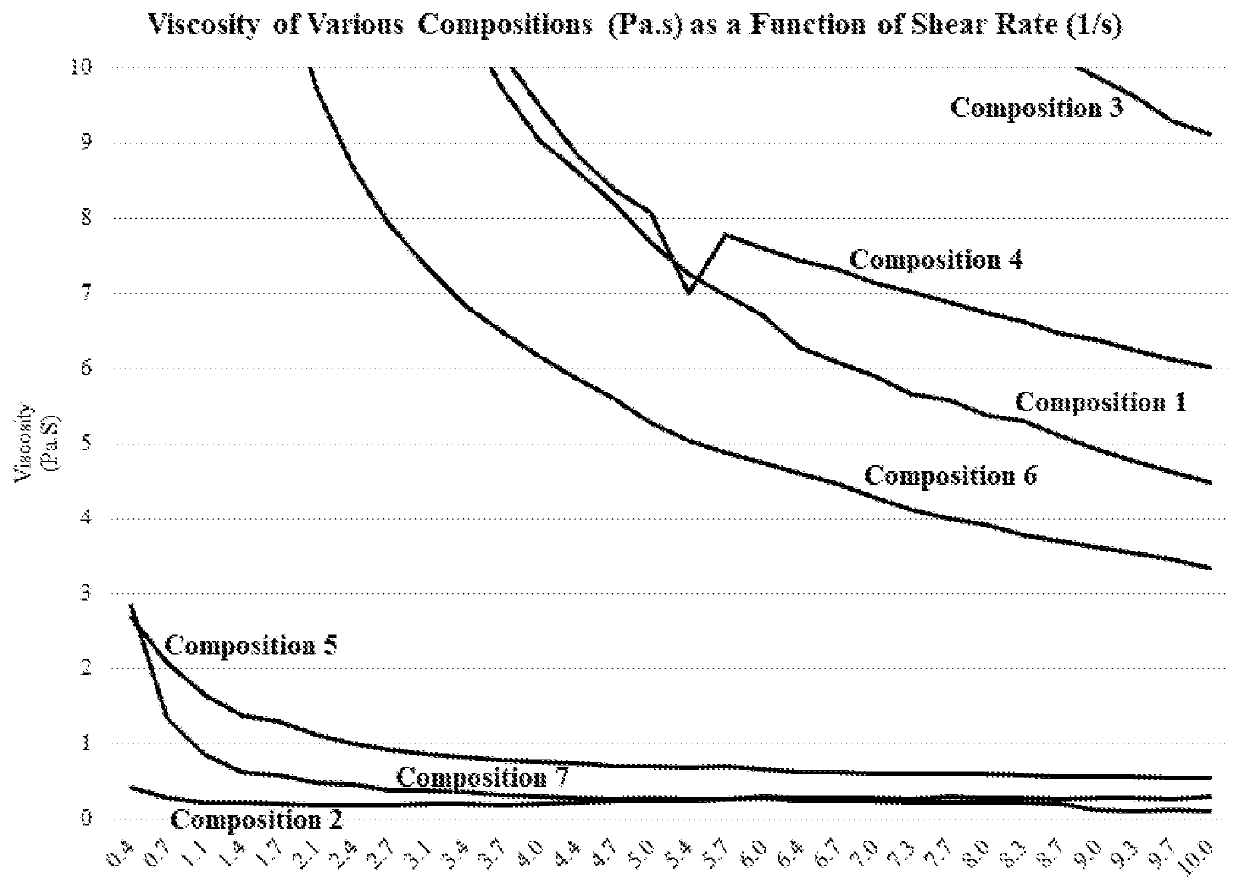Use of glycol ethers and alkyl alcohol blends to control surfactant composition rheology
a technology of glycol ether and alkyl alcohol, which is applied in the direction of detergent compositions, surface-active detergent compositions, chemistry apparatus and processes, etc., can solve the problems of non-newtonian characteristics of one commercially available product, difficult handling, and the type of surfactant that is typically increased in viscosity, etc., to reduce the viscosity of the surfactant composition, simple formulation, and the effect of superior and unexpected results
- Summary
- Abstract
- Description
- Claims
- Application Information
AI Technical Summary
Benefits of technology
Problems solved by technology
Method used
Image
Examples
examples
[0079]The following compositions are formulated and evaluated to determine viscosity.
[0080]Composition 1 (comparative) is sodium laureth sulfate (SLES) as a 70% by weight actives mixture in 30% by weight water supplied as Steol CS270 by Stepan. The weight ratio of SLES:ethanol:glycol ether is 100:0:0 by total weight.
[0081]Composition 2 (comparative) is 60 g of the aforementioned SLES (70% actives) combined with 12 g ethanol. The weight ratio of SLES:ethanol:glycol ether is 60:12:0 by total weight. The weight ratio by actives is 42:12:0.
[0082]Composition 3 (comparative) is 60 g of the aforementioned SLES (70% actives) combined with 12 g of the glycol ether. The weight ratio of SLES:ethanol:glycol ether is 60:0:12 by total weight. The weight ratio by actives is 42:0:12.
[0083]Composition 4 (comparative) is 60 g of the aforementioned SLES (70% actives) combined with 18 g of the glycol ether. The weight ratio of SLES:ethanol:glycol ether is 60:0:18 by total weight. The weight ratio by ac...
PUM
| Property | Measurement | Unit |
|---|---|---|
| viscosities | aaaaa | aaaaa |
| viscosity | aaaaa | aaaaa |
| weight percent | aaaaa | aaaaa |
Abstract
Description
Claims
Application Information
 Login to View More
Login to View More - R&D
- Intellectual Property
- Life Sciences
- Materials
- Tech Scout
- Unparalleled Data Quality
- Higher Quality Content
- 60% Fewer Hallucinations
Browse by: Latest US Patents, China's latest patents, Technical Efficacy Thesaurus, Application Domain, Technology Topic, Popular Technical Reports.
© 2025 PatSnap. All rights reserved.Legal|Privacy policy|Modern Slavery Act Transparency Statement|Sitemap|About US| Contact US: help@patsnap.com

